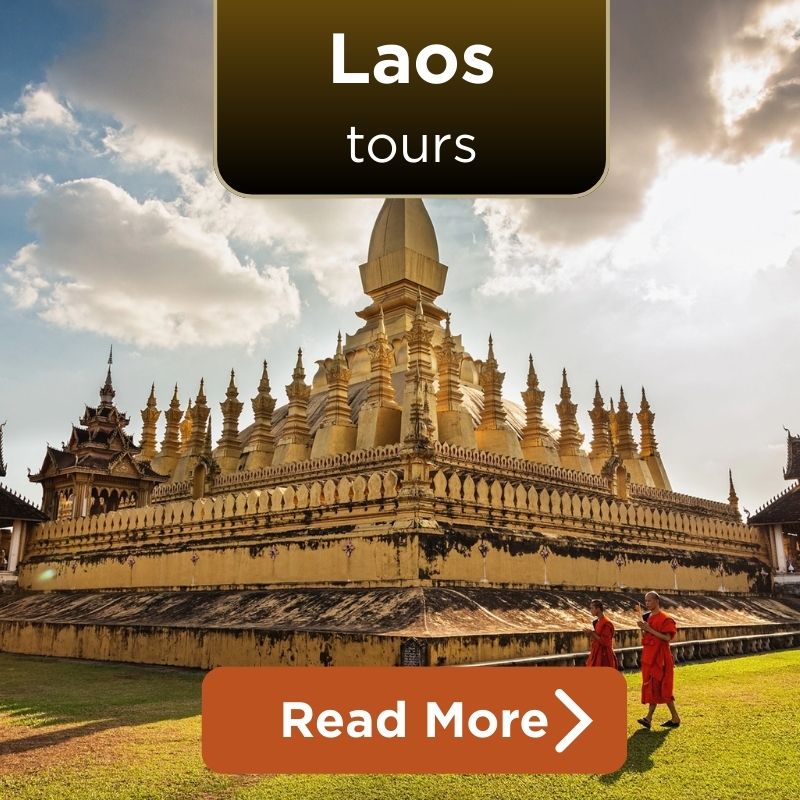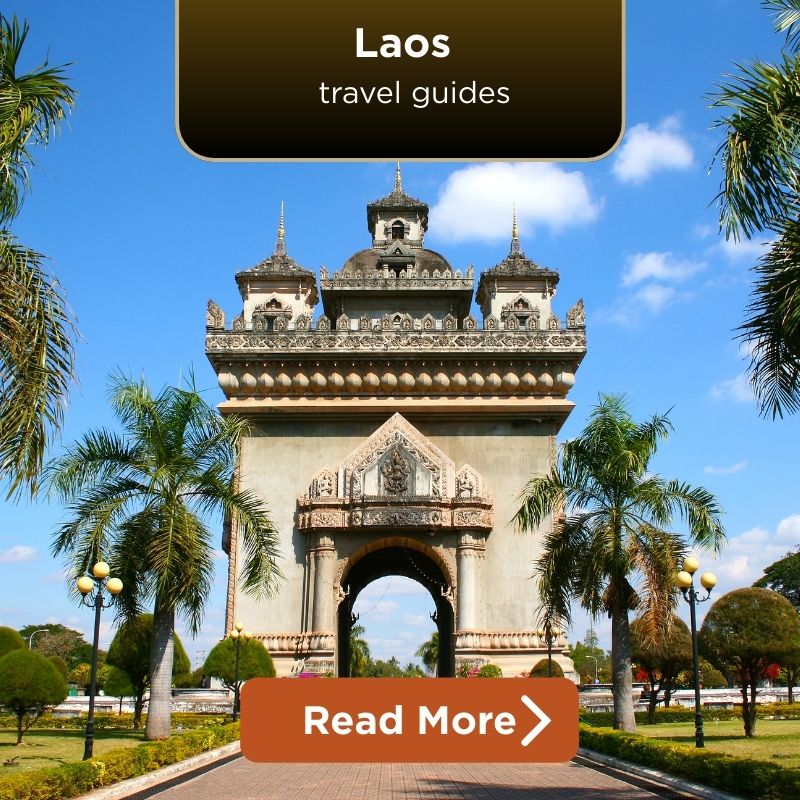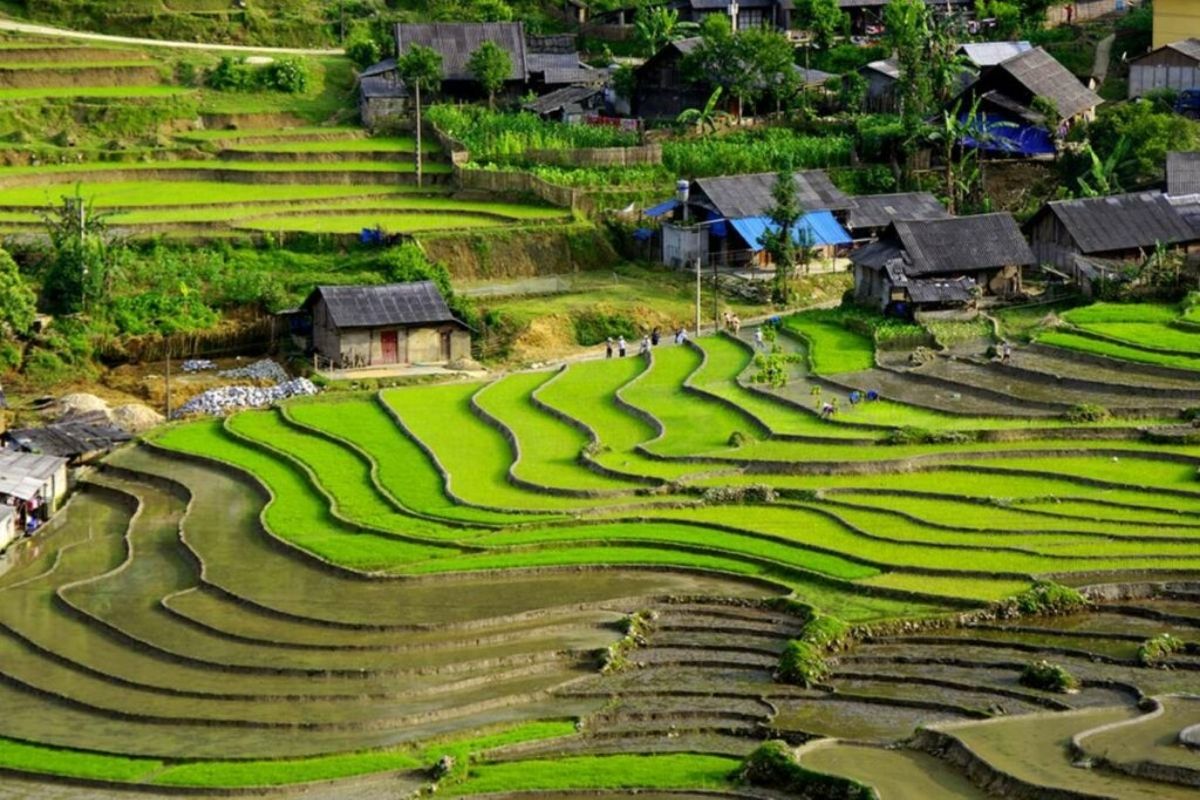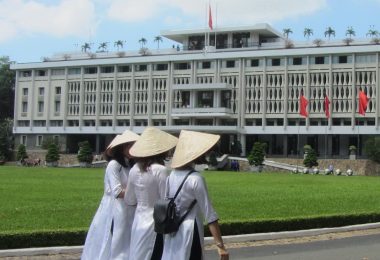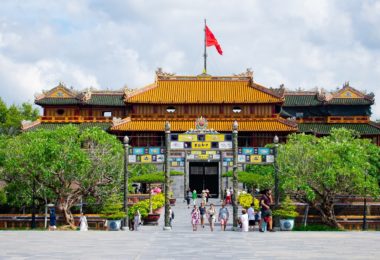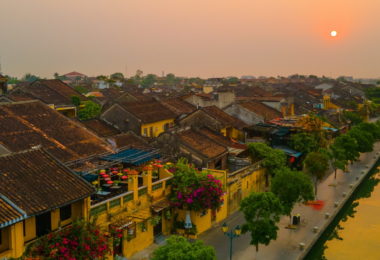From Citadel to Capital: The Rise of Imperial Hue
The story of Hue Vietnam History begins in 1802, when Gia Long, founder of the Nguyen Dynasty, unified the country and chose Hue as the new imperial capital. But Hue’s roots run deeper—it was once home to the ancient Cham people and later part of Dai Viet, making it a cultural crossroads long before the Nguyen emperors.
To mark its new royal status, the Imperial City was built with thick stone walls, wide moats, and the mysterious Forbidden Purple City at its heart. This was not just a capital—it was the sacred center of power, protected by the Ngu Binh Mountain and flowing with the calm grace of the Perfume River.
Every building followed ancient principles of geomancy, symbolizing the Five Elements and Five Directions. Hue Vietnam History lives in this harmony—between nature, architecture, and belief.
Want to explore this royal legacy in person? A Vietnam heritage daily tour will take you behind the scenes of Hue’s majestic past, from citadels to temples. Join a Vietnam heritage daily tour and discover how Hue Vietnam History shaped a dynasty—and still shapes Vietnam today.

Imperial Hue (Source: mia)
Monuments of Memory: What the Emperors Left Behind
When exploring Hue Vietnam History, one of the most fascinating parts is visiting the monuments built by the emperors of the Nguyen Dynasty. These are not just buildings—they are stories made of stone.
Start with the Citadel, built in 1804 by Gia Long. This huge fortress was the center of power, and inside it stands the Thai Hoa Palace, where emperors held royal ceremonies. It’s one of the most important symbols of Vietnam’s last dynasty.
Next are the royal tombs—each one reflects a different emperor’s style. The Tomb of Minh Mang is peaceful and balanced, showing his love for harmony between man and nature. The Tomb of Khai Dinh is the most striking, with a mix of Vietnamese and European designs. It has colorful mosaics, dragons, and steep stairs. Meanwhile, the Tomb of Tu Duc is quiet and poetic, surrounded by pine trees and lakes.
Don’t miss the Thien Mu Pagoda, built in 1601. It’s one of Hue’s oldest religious sites and still stands tall by the Perfume River. With its seven layers, it has become a true icon of the city.
Sadly, many of these monuments were damaged during wars, especially the 1968 Battle of Hue. But thanks to careful restoration work, many have been repaired using traditional methods and materials.
To understand these places deeply, join a Vietnam heritage daily tour. Local guides will explain the meaning behind each design, and the stories of the emperors who built them. You’ll gain real insight into Hue Vietnam History, not just through what you see—but through what you feel.

Thai Hoa Palace (Source: thanhnien)
Cultural Legacy: Hue’s Festivals, Arts, and Royal Cuisine
Royal Music That Still Echoes Today
A key part of Hue Vietnam History is its elegant court music known as Nha nhac. This traditional performance, once played during royal ceremonies of the Nguyen Dynasty, is now recognized by UNESCO as an Intangible Cultural Heritage. The instruments, costumes, and melodies offer a direct connection to the world of Gia Long and the imperial court.
Hue Festival – A Celebration of Imperial Glory
Every two years, Hue transforms during the Hue Festival, a spectacular event that revives ancient rituals and art forms. You’ll witness royal parades, traditional dances, and dramatic reenactments that reflect the richness of Hue Vietnam History. It’s not just a festival—it’s a time machine.
Traditional Crafts Passed Down for Generations
Around Hue, local villages still preserve age-old crafts that date back to imperial times. These include:
- Conical hats (non la) often hand-painted with poems or images of Ngu Binh Mountain
- Paper flowers from Thanh Tien Village used in temple rituals
- Royal embroidery used to decorate imperial robes and religious items
Each item tells a story—crafted by hands that have passed down skills for centuries.
Hue’s Royal Cuisine – A Feast for the Senses
No exploration of Hue Vietnam History is complete without tasting its royal-inspired food. Hue’s cuisine is known for its balance, beauty, and bold flavor:
- Bun bo Hue: A spicy noodle soup with lemongrass-scented broth
- Banh beo: Delicate rice cakes topped with dried shrimp and crispy pork skin
- Nem lui: Grilled pork skewers eaten with rice paper and herbs
Many families in Hue still cook these dishes using secret recipes passed down by their ancestors.
Living Heritage Through Local Wisdom
From music and crafts to cooking and storytelling, locals play a vital role in preserving the cultural depth of Hue Vietnam History. These traditions are more than tourism—they are a way of life that connects modern Hue to its royal past.

Nha nhac (Source: heritagevietnamairlines)
Hue Today: A Heritage City Looking Forward
Hue Vietnam History is not just something of the past—it continues to grow and shine today. In fact, Hue is becoming Vietnam’s first heritage-based smart city and is set to become a central government city after 2025. The goal? To protect its imperial legacy while building a greener, smarter future.
The city has taken real action to protect its cultural treasures. New dams and drainage systems help prevent floods from damaging temples and tombs built since the time of Gia Long and the Nguyen Dynasty. These efforts show how much Hue Vietnam History still matters today.
Technology also plays a part. Hue is using 3D scans and digital tools to restore and preserve old buildings. In the future, visitors might even explore parts of the Imperial City through virtual reality!
To keep Hue beautiful and clean, many travelers now enjoy bicycle tours through peaceful villages and historic sites. It’s a great way to explore Hue Vietnam History without harming the environment.
And the best way to experience this mix of old and new? Join a Vietnam heritage daily tour. These tours help visitors discover the real stories behind Hue’s palaces, pagodas, and people—while supporting local culture and preservation work.
So if you want to see a city that respects its past and invests in its future, come to Hue. Book a Vietnam heritage daily tour and see how Hue Vietnam History lives on—stronger than ever.
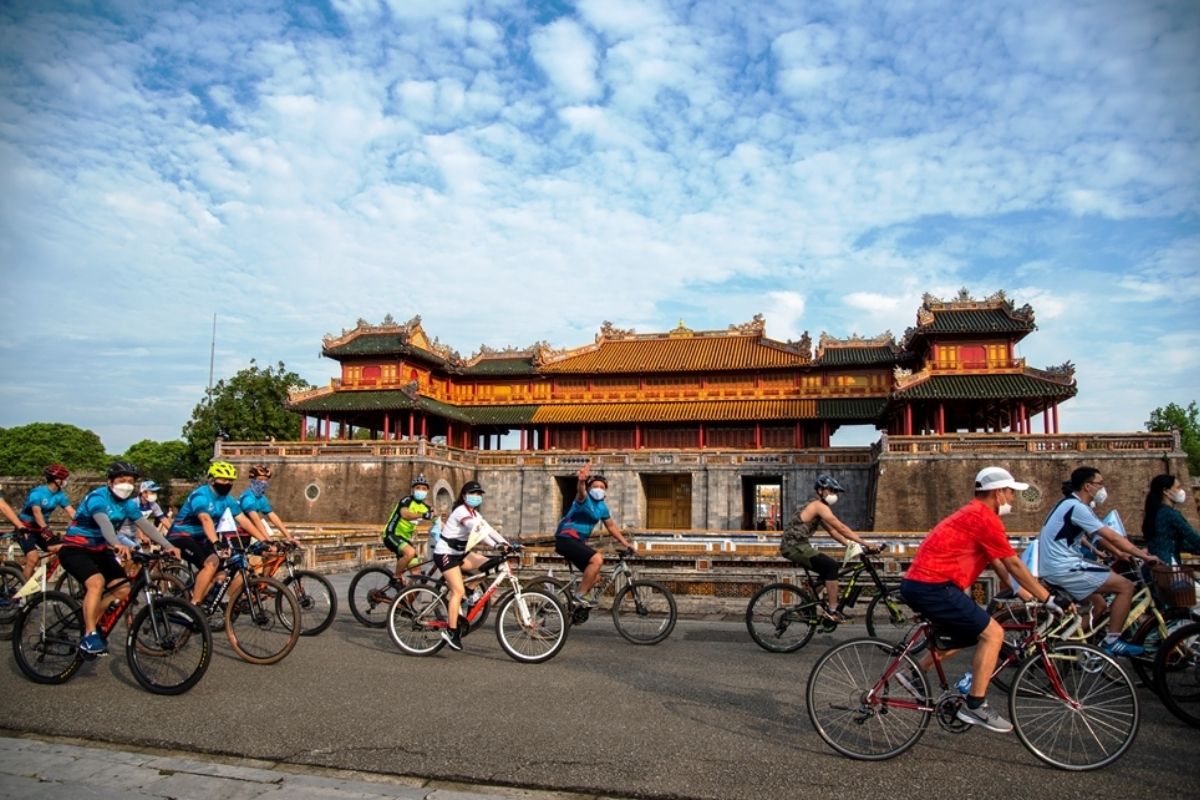
Bicycle tours (Source: baochinhphu)
Plan Your Visit: Travel Tips for Hue Vietnam History
Best Time to Visit Hue Vietnam History Tour
For the perfect weather, plan your journey between January and March. During these months, Hue is cool, dry, and calm—an ideal setting to walk through ancient palaces, royal tombs, and peaceful gardens. This is also the time when the city feels most serene, giving you space to soak in the rich atmosphere of Hue Vietnam History.
Explore with Local Experts for Hue Vietnam History
To truly understand the legacy of Gia Long, the Nguyen Dynasty, and the royal court, don’t just wander on your own. Book a Vietnam heritage daily tour with passionate local guides who know the real stories behind every gate, statue, and hidden corner. These guides bring Hue Vietnam History to life with personal insights and cultural wisdom.
Suggested 2–3 Day Itinerary with Hue Vietnam History Tour
Here’s a sample plan for travelers focused on culture:
- Day 1: Imperial City, Thai Hoa Palace, Thien Mu Pagoda
- Day 2: Tombs of Minh Mang, Tu Duc, Khai Dinh
- Day 3: Traditional craft villages & evening boat ride on the Perfume River
Along the way, a Vietnam heritage daily tour can help you go deeper, connecting the landmarks to the emperors, philosophies, and daily life of old Vietnam.
Cultural Events Not to Miss for Hue Vietnam History
Hue is alive with cultural celebrations that reflect its imperial soul:
- Hue Festival (biennial): Performances, royal parades, art from around the world
- Royal Night Show: Music, dance, and costumes inside the Citadel at night
- Incense-making villages: Visit Thuy Xuan to watch locals make fragrant sticks by hand—an art passed down for generations
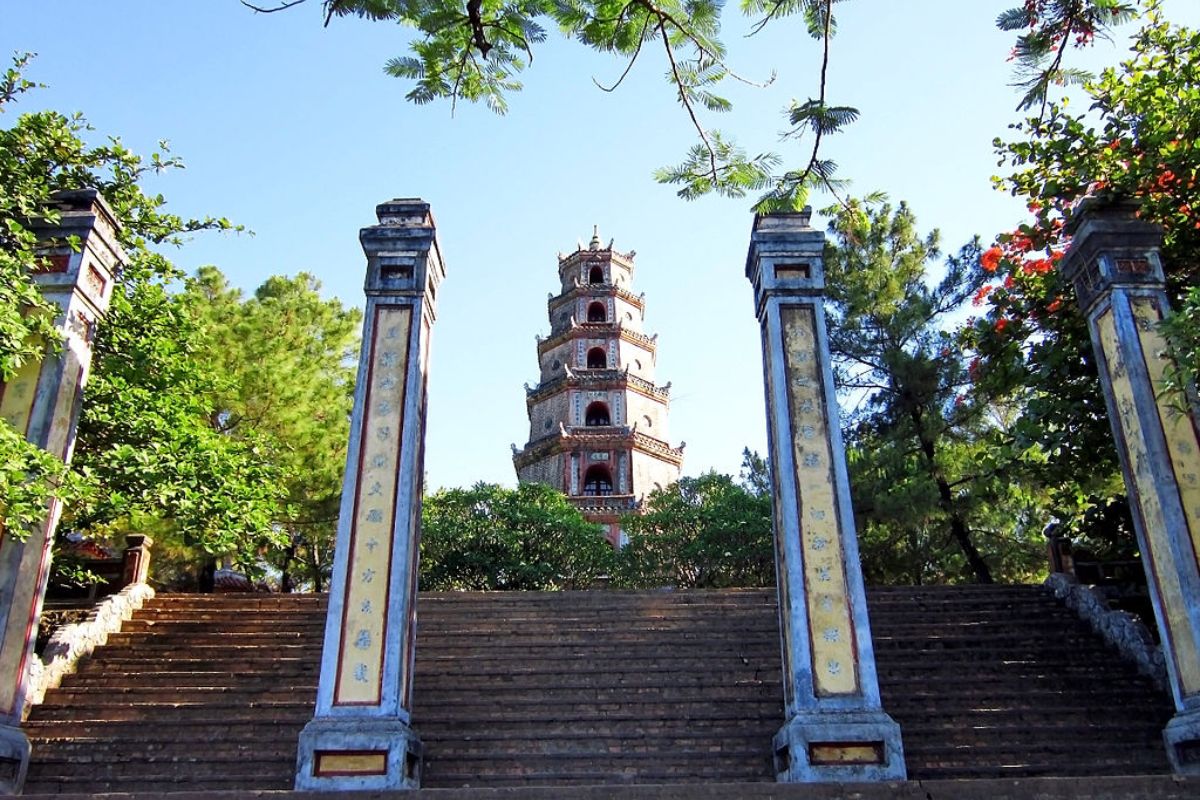
Thien Mu Pagoda (Source: vietnamtourism)
Conclusion
heart of the Nguyen Dynasty, Hue remains Vietnam’s cultural soul—where tradition, beauty, and royal legacy come together.
Join a Vietnam heritage daily tour to walk through centuries of history and discover why Hue Vietnam History continues to inspire. Book your Vietnam heritage daily tour today and witness the true spirit of imperial Vietnam!







